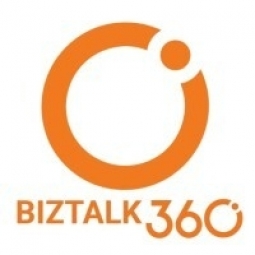Technology Category
- Infrastructure as a Service (IaaS) - Cloud Computing
- Sensors - Temperature Sensors
Applicable Industries
- Healthcare & Hospitals
Applicable Functions
- Sales & Marketing
Use Cases
- Behavior & Emotion Tracking
- Inventory Management
About The Customer
Dentsu Aegis Network Ltd. is a multinational media and digital marketing communications company headquartered in London, United Kingdom. It is a wholly owned subsidiary of the Japanese advertising and public relations firm Dentsu. Dentsu Aegis Network and its brand businesses of Carat, Dentsu, dentsu X, iProspect, Isobar, mcgarrybowen, Merkle, MKTG, Posterscope and Vizeum make the best use of today’s media mix to bring to life the right communication strategy and deliver the best results for clients. Dentsu Aegis operates out of 5 continents spanning across 145 countries and 24 time zones with about 40,000 passionate people.
The Challenge
Dentsu Aegis Network, a multinational media and digital marketing communications company, faced a significant challenge when they decided to increase the number of applications in their BizTalk environment from 7-8 to approximately 15. This expansion made their BizTalk environment more critical in terms of the data that passes through BizTalk and for the complete integration scenario. The increased number of applications meant that the company needed a more robust and efficient way to monitor their BizTalk server applications and overall environment. The management team was particularly concerned about the health of the BizTalk server environment, disk space, tracking information, and the count of suspended events.
The Solution
To address these challenges, Dentsu Aegis Network implemented BizTalk360 during the pilot stages of the project. The team created different alarms to get notified of the status of the BizTalk environment, disk space, tracking information, and the count of suspended events. In addition to using alarms to monitor their BizTalk applications, the team at Dentsu Aegis Network used the Health Check Report functionality to a greater extent. This feature helped the team to trigger periodic reports to the management who were very concerned about the health of the BizTalk server environment. Despite using SCOM for other different functions in the business, the team at Dentsu Aegis Network compulsorily used BizTalk360 to get alerts about the BizTalk environment. The team also made use of the Custom Email Templates to generate different email messages to be sent to the management and the team. The team also used the BizTalk Health Monitor (previously known as Message Box Viewer) to analyze and fix issues in the BizTalk Server Environment and the SFTP/File Adapter Monitoring capabilities.
Operational Impact

Case Study missing?
Start adding your own!
Register with your work email and create a new case study profile for your business.
Related Case Studies.

Case Study
Hospital Inventory Management
The hospital supply chain team is responsible for ensuring that the right medical supplies are readily available to clinicians when and where needed, and to do so in the most efficient manner possible. However, many of the systems and processes in use at the cancer center for supply chain management were not best suited to support these goals. Barcoding technology, a commonly used method for inventory management of medical supplies, is labor intensive, time consuming, does not provide real-time visibility into inventory levels and can be prone to error. Consequently, the lack of accurate and real-time visibility into inventory levels across multiple supply rooms in multiple hospital facilities creates additional inefficiency in the system causing over-ordering, hoarding, and wasted supplies. Other sources of waste and cost were also identified as candidates for improvement. Existing systems and processes did not provide adequate security for high-cost inventory within the hospital, which was another driver of cost. A lack of visibility into expiration dates for supplies resulted in supplies being wasted due to past expiry dates. Storage of supplies was also a key consideration given the location of the cancer center’s facilities in a dense urban setting, where space is always at a premium. In order to address the challenges outlined above, the hospital sought a solution that would provide real-time inventory information with high levels of accuracy, reduce the level of manual effort required and enable data driven decision making to ensure that the right supplies were readily available to clinicians in the right location at the right time.

Case Study
Gas Pipeline Monitoring System for Hospitals
This system integrator focuses on providing centralized gas pipeline monitoring systems for hospitals. The service they provide makes it possible for hospitals to reduce both maintenance and labor costs. Since hospitals may not have an existing network suitable for this type of system, GPRS communication provides an easy and ready-to-use solution for remote, distributed monitoring systems System Requirements - GPRS communication - Seamless connection with SCADA software - Simple, front-end control capability - Expandable I/O channels - Combine AI, DI, and DO channels

Case Study
Driving Digital Transformations for Vitro Diagnostic Medical Devices
Diagnostic devices play a vital role in helping to improve healthcare delivery. In fact, an estimated 60 percent of the world’s medical decisions are made with support from in vitrodiagnostics (IVD) solutions, such as those provided by Roche Diagnostics, an industry leader. As the demand for medical diagnostic services grows rapidly in hospitals and clinics across China, so does the market for IVD solutions. In addition, the typically high cost of these diagnostic devices means that comprehensive post-sales services are needed. Wanteed to improve three portions of thr IVD:1. Remotely monitor and manage IVD devices as fixed assets.2. Optimizing device availability with predictive maintenance.3. Recommending the best IVD solution for a customer’s needs.

Case Study
HaemoCloud Global Blood Management System
1) Deliver a connected digital product system to protect and increase the differentiated value of Haemonetics blood and plasma solutions. 2) Improve patient outcomes by increasing the efficiency of blood supply flows. 3) Navigate and satisfy a complex web of global regulatory compliance requirements. 4) Reduce costly and labor-intensive maintenance procedures.

Case Study
Cloud-based healthcare solution for Royal Philips
Royal Philips wanted to launch its cloud-based healthcare solution HealthSuite Digital Platform in China to deliver services to help cope with challenges related to urbanization and population growth. Philips wanted to achieve this goal by combining mobile, cloud computing and big data technologies. To bring this platform and product to market, Philips required cloud computing and local technical service capabilities in China, in addition to a flexible IT infrastructure that could handle user requests.








